 Harrison, MI
Harrison, MILight Rain, 50°
Wind: 9.2 mph, N
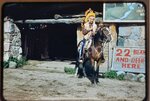
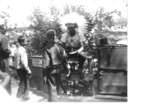

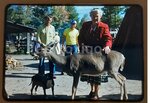
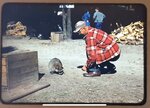
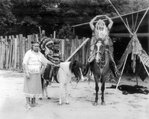

By ANGELA KELLOGG-HENRY
Cleaver Managing Editor
I recently purchased a set of color slides from an online auction. I was really excited at first because they are in color and from the 1950s. They were taken at the Wildlife Park of John “Spikehorn” Meyer. While still a great find, I was disappointed the man himself wasn’t a subject of any of the slides. My assumption would be by the time the photos were taken Spike was aging and probably in Gladwin at the nursing home where he died in 1959.
The song by Jamey Johnson, “In Color” was running through my mind when I first saw the slides. The only other color photos I have seen of Spikehorn was a short clip from a 1950s era tourism promotional film. The clip is on YouTube, and I will link it when this article is online on the Cleaver website.
Born in Ohio but raised on a farm near Shepherd, Spikehorn came to the Harrison area in the late 20s. On 80 acres south of Harrison he continued various businesses such as his Green Mountain Tree Company. Already claiming to be in his 80s he began Spikehorn’s Bear Den and Wildlife Park in the 1930s. Wearing homemade buckskins and sporting a long beard, his business was visited by 1,000s of tourists each year.
The Chambers family began working with Spikehorn in 1951. They quickly assumed nicknames; Lonnie Chambers, alias Chief Red Eagle, his wife Willa Maye was “Starr”, his son “Little Beaver” or “Blue Eagle”, his oldest daughter “White Horse” and the youngest “Little Violet” as part of their “Indian” personas. They were not Indigenous people but a Black family from the Detroit area.
Disagreements between Spikehorn and his associates were not unusual and usually involved non-payment. Chambers had his share of disputes with Spikehorn. Spike would defend Lonnie and his family claiming heritage as “Indians in the Blackfoot Tribe” and later he would say he had been informed Red Eagle was non-Indian. These terms are outdated today as well as the concept of impersonating indigenous people for entertainment.
Spikehorn and those at his camp lived roughly by choice and to further exaggerate his woodsmen persona. He often had characters that would stop by and work for a while. “Nature Boy,” a nearly naked man stayed for a summer and moved on in the fall. Others contracted to run his souvenir shop or, like the Chambers family, get in on the tourism action.
Tourists were invited to “shake hands with bears”. They were also enticed to purchase souvenirs of Canadian moccasins, photos, baskets, and other trinkets. Many of these items are in local collections.
The camp held bears, of course, but also tame raccoons, chickens, dogs, buffalo, elk, and a menagerie of other wild animals. Some were even made up such as his “Flying Red Irish Bat” which was no more than a red brick in a box up a tree that one could pay 5 cents to climb up and look into before realizing their nickel had been had.
Bears were generally docile and fed sweets, cakes and honey. There were incidents of breakouts, scuffles, bites and close calls with bears that gave Spike horn publicity and created excitement for those visiting the bear dens. Several lawsuits kept Spikehorn busy defending and promoting his business and allowing him to flaunt his love of showmanship. Another reason I believe Spike wasn’t present when the slides were taken is that the bears are behind a fence in the slides. In almost every photo taken of the bear den the bears are loose, and Spike is very near. A postcard sold at Spike’s even declares, “The bears like Spikehorn and honey.”
Spikehorn became so famous and his likeness so well-known he was featured on four different editions of Clare County Road maps. Many people around the state associated Harrison with Spikehorn Meyer, “the old guy who lives with bears.”
John “Spikehorn” Meyer died in 1959, at age 89, and is buried in the Salt River Cemetery near Shepard. His tombstone says simply, "Spikehorn" Central Michigan Naturalist.” Spikehorn remains one of the most fascinating characters ever to inhabit Harrison.
© Clare County Cleaver
Other items that may interest you

Comments
No comments on this item Please log in to comment by clicking here